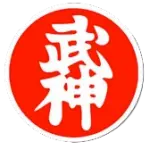The Bujinkan, founded by Dr. Masaaki Hatsumi, the 34th Grandmaster of
Togakure-ryu Ninjutsu, is
a comprehensive martial arts system rooted in the teachings of nine traditional Japanese martial
arts schools
(ryu-ha).
The name "Bujinkan" translates to "School of the Divine Warrior," emphasizing
the development
of the practitioner's spirit and character alongside physical techniques.
The term "Ninpo", often referred to as "The Way of the Ninja," represents not
just stealth and
espionage, but also a profound philosophy of endurance, survival, and adaptability.
The Bujinkan system preserves techniques and philosophies developed over centuries, offering a
holistic approach
to self-protection that extends beyond physical combat.
Each of the nine schools contributes unique teachings, collectively forming a rich and diverse
curriculum:
-
Togakure-ryu:
-
Founded in the late 12th century by Daisuke Togakure, this school is considered the
foundation of Bujinkan Ninpō. It
emphasizes stealth, concealment, and survival techniques, training practitioners in
eighteen fundamental areas of
expertise, including spiritual refinement and a range of physical and mental skills.
-
Gyokko-ryu:
- Known for its fluid movements and joint manipulation techniques, this school
emphasizes adaptability through its secret strategies, the Kosshi Sanpō, which
embody the mystery of nature's ever-changing spirit. It focuses on striking the
opponent's muscles and nerve points to incapacitate them.
-
Kukishin-ryu:
-
Specializing in weaponry and battlefield tactics, this school highlights the
connection between various weapons,
including the sword, spear, and staff. It focuses on "pushing and cutting" with the
sword and understanding kyusho
(vital points). The school is renowned for its comprehensive weapon techniques and
strategies.
-
Shinden Fudo-ryu:
-
Centered on natural movements and unarmed combat, this school focuses on
Dakentaijutsu, which includes striking,
kicking, and grappling techniques designed to control the opponent's body. It
emphasizes natural posture and movement,
allowing practitioners to adapt to various situations without relying on formal
stances.
-
Takagi Yoshin-ryu:
-
Renowned for its grappling and throwing techniques, this school incorporates strikes
and leverage into movements such as
the Koshi Nage (hip throw) techniques. It specializes in close-quarters
combat,
focusing on techniques that can be
applied in confined spaces.
-
Gikan-ryu:
-
Known for its unique strikes and unconventional weaponry, this school also
emphasizes precise timing and the
exploitation of opportunities during combat. It focuses on powerful strikes
targeting the opponent's bone structure and
vital points.
-
Koto-ryu:
-
Focused on close-quarters combat and powerful strikes, this school targets the
opponent's bone structure to deliver
devastating blows. It emphasizes linear movements and direct attacks to overwhelm
the opponent.
-
Gyokushin-ryu:
-
Emphasizing strategy, espionage, and subtle techniques, this school teaches
practitioners the art of psychological and
situational manipulation. It includes techniques such as Nawa Nage (rope throwing)
and focuses on evasion and deception.
-
Kumogakure-ryu:
-
Specializing in escape and evasion techniques, this school includes unique methods
for moving through various
environments, emphasizing freedom of movement and adaptability. It incorporates
techniques such as the use of the
kamayari (sickle spear) and focuses on stealth and agility.
Together, these nine schools preserve the legacy of Japanese martial traditions while
integrating them into a
unified system.
The Bujinkan's teachings encourage not only physical mastery but also mental fortitude,
spiritual awareness, and
an understanding of the interconnectedness of all things.
By training in Bujinkan Ninpo, practitioners embrace a way of life that transcends combat,
cultivating
resilience, discipline, and harmony in all aspects of their lives.


